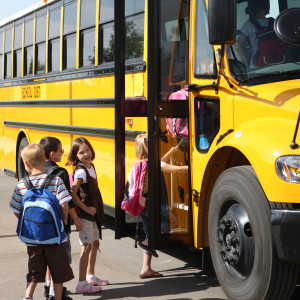The Centers for Disease Control and Prevention recently confirmed what my fellow physicians and I have been saying for months: It’s both safe — and critically important — for children to return to school, in-person, this fall.
Across the country, state and local officials have closed classrooms based on bad science at incalculable cost to tens of millions of American students and their families.
The CDC guidance states, “School closures have disrupted normal ways of life for children and parents, and they have had negative health consequences on our youth.
CDC is prepared to work with K-12 schools to safely reopen while protecting the most vulnerable.” The CDC goes on to say, “The best available evidence indicates that COVID-19 poses relatively low risks to school-aged children.”
The CDC recommendation highlights the importance of classroom learning in educating children. “Teachers are able to more actively participate in student learning, provide feedback as students encounter challenges, and promote active learning among students.” In contrast, “Studies show that students have experienced learning loss during the period of school closure and summer months.”
But the harm to students goes far beyond academics.
According to the American Academy of Pediatrics, extended breaks from classrooms result “in social isolation, making it difficult for schools to identify and address important learning deficits as well as child and adolescent physical or sexual abuse, substance use, depression and suicidal ideation.”
These breaks from classrooms have had a “substantial impact on food security and physical activity.” Indeed, half the children in the nation depend on schools for their lunches, often their most nutritious meal of the day.
The National Academy of Sciences highlights the disproportionate impact classroom closures have had on the most vulnerable: “Without in-person instruction, schools risk children falling behind academically and exacerbating educational inequities.”
Minority students, who already disproportionately face educational challenges, are particularly vulnerable to school closures. They are less likely to have the broadband access and technology support necessary to operate the remote schooling software. In addition, their parents are less likely to be able to work from home in order to be available for assistance and to keep children on task.
The Los Angeles Times reports that during the virtual schooling experiment this spring, “low-income students and black and Latino students showed participation rates between 10 and 20 percentage points lower than white and Asian peers.” Minority “attendance” at virtual school was low.
If they are unable to find other childcare arrangements, parents who can’t work from home must quit their jobs to take care of their kids who would otherwise be in school. This barrier to work further slows our national economic recovery — especially for those who need it most.
As the CDC document alludes, far more children die of influenza than from COVID-19. In addition to the near-zero death rate from COVID-19, the American Academy of Pediatrics notes: “The preponderance of evidence indicates that children and adolescents are less likely to be symptomatic and less likely to have severe disease resulting from SARS-CoV-2 infection.”
Teachers unions point out that school reopening represents a risk of virus transmission to teachers and more vulnerable family members. Yet here too the evidence is weak. After Europe fully reopened its schools this spring, there was no associated uptick in COVID-19 cases. A growing body of research suggests that children rarely transmit the disease and may actually break the chain of infections.
Furthermore, a relatively small percentage of teachers and support staff actually fall into the high-risk categories for COVID-19. Those individuals can easily take additional precautions for themselves rather than penalizing millions of children.
Teachers, like healthcare employees, public safety officers and grocery store cashiers, are essential workers and are being paid as such. To stay home writ large amounts to an abandonment of the nation’s students.
Due to the significant risks of keeping kids out of school and the low risk of sending them back, I joined with more than 1,500 physicians from around the country last week to sign a petition organized by the Job Creators Network Foundation calling for elementary and middle schools to reopen their classrooms to in-person education this fall.
There can be many policy debates about how society should respond to COVID-19, but school reopening should not be one of them. It’s time for state and local officials and teachers unions to stop ignoring the scientific consensus and the needs of America’s children.

